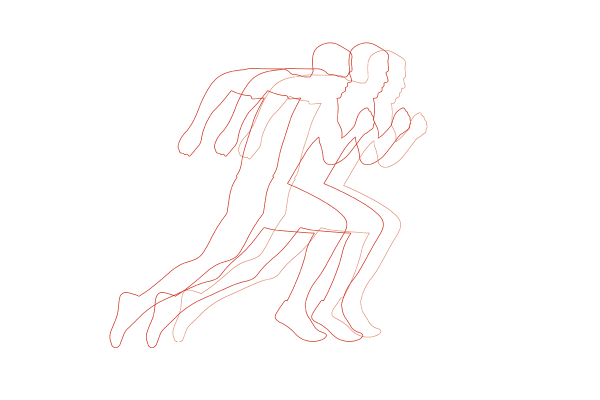Imagine you’re an athlete, spending your days in the shell of a constant migraine, feeling immediately tired upon waking with a full day of training and classes ahead of you. This was Tom’s reality for almost a year as he grappled with RED-S, also known as Relative Energy Deficiency in Sport. RED-S is an underrecognized but brutal condition which is a result of the body not receiving enough calories and nutrients to meet its energy expenditure. Now studying at Otago and no longer playing sports, Tom has had time to reflect on the impact the condition has had on his mental and physical health.
Through battling migraines on the daily, Tom eventually began to associate eating with his migraine triggers, causing him to avoid food, limiting his energy intake to the point where he became immensely fatigued and his body began to shut down. “During a season I had three major episodes,” said Tom. “I couldn’t race because every time I tried, I would get tingles throughout my body, and then couldn’t stop what would come next.” The extent of these episodes for Tom was reflected in full body exhaustion and complete loss of motor control as his muscles began to seize up entirely.
The condition is not a disorder; it’s a state of being that the body enters, and can enter into via a number of pathways. It could be brought on by coaching pressure or other conditions preventing you from eating; it could be due to an incomplete diet or simply struggling to get enough calories, protein and other nutrients.
Tom said his battle felt silent as his coaches had little experience with RED-S and the impact it could have on athletes, as the condition is largely only discussed in exclusive medical circles. A survey conducted on students at the University of Otago, most of whom were involved in sport, found that only 21% of students had ever heard of RED-S, and even fewer had any concrete understanding of the condition’s effects. Additionally, the survey found that only 7% of students knew someone with RED-S, showing that the battle is waged largely in isolation from the crucial support systems provided by friends and whanau.
To understand how RED-S managed to slip under the radar, Critic Te Ārohi spoke with Doctor Hamish Osborne, a senior lecturer in the Department of Medicine. Though Osborne stressed the fact that RED-S was not “one size fits all”, he conceptualised the condition as a smartphone. He asked Critic Te Ārohi, “What happens to our iPhone when the battery starts getting low?... It stops updating apps, it stops receiving emails, so some apps shut down. Well, think of the human body as a whole series of apps.” Athletes that are under-fuelling may notice any number of health and performance consequences such as frequent injuries, missed periods, depression, difficulty sleeping and frequent sickness.
Additionally, Osborne explained that “it can happen not just with elite athletes, but any level of athlete where the energy outputs aren’t being met by the energy inputs.” Although its name and diagnostic criteria have changed over the last 30 years, the condition’s presence has been felt by many. And, being extremely detrimental to the everyday lives of athletes and relatively widespread, it seems strange that the condition is only recognised in exclusive circles.
Sophie, a student who suffered from RED-S early in her life, agreed that people aren’t “aware of it enough.” Sophie thinks that in order to help those with the condition, there needs to be more of “an awareness from coaches because they're the ones that are telling the athletes to eat in a particular way… just making sure you're prioritising health over performance and results.”
Touching on the dangerous winning mentality of the sporting world, Sophie stated that her coaches were “thinking about results, like it’s all performance driven.” This kind of unempathetic and high-pressure coaching mindset, based on meeting short-term goals, is another crucial barrier on the path to recovery for RED-S sufferers. As such, Sophie’s battle with RED-S became largely internal until she eventually removed herself from the sporting environment which pushed her to restrict calorie intake.
When questioned on potential means of harm reduction, Sophie said, “I feel like with social media there’s more understanding.” Still she lamented, “Unless you’re in the know, and looking for that sort of stuff it’s not really out there.”
RED-S fundamentally changed the lives of Tom and Sophie, two students unfortunately isolated in their battle with this largely unrecognised condition. To prevent this from happening, coaches and nutritionists must come to grapple with the diverse impact that RED-S can have on athletes. Further, Doctor Osborne suggested that if you, the reader, are seeing symptoms in yourself, “Go to your doctor and say, ‘I think I've got RED-S.’” In this way, the condition can be targeted.
Once RED-S is named and addressed as a serious impediment to both physical and mental wellbeing, an opportunity arises to eradicate the condition suffered needlessly by students. Tom and Sophie’s conditions both drastically improved when they eventually came to recognise the presence of RED-S. Only by increasing knowledge of this dangerous condition will a solution finally be possible after 30 long years.



